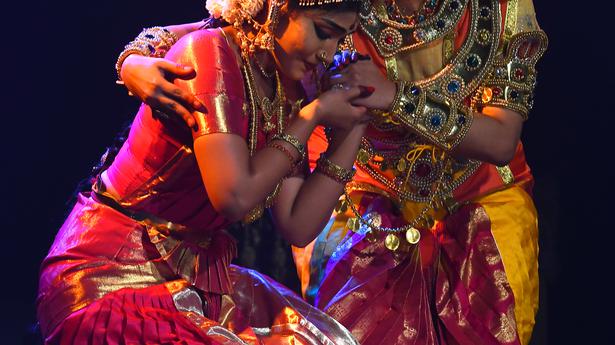Anitha Guha’s ‘Praise of the Seven Hills’ had drama, pace, and well-choreographed patterns
Anitha Guha’s ‘Praise of the Seven Hills’ had drama, pace, and well-choreographed patterns
Rarely will you go ‘ah’ in a themed Bharatanatyam production, but Anitha Guha’s ‘Praise of the Seven Hills’ on Lord Venkateshwara made you appreciate her skill and knowledge. As the performance was based on devotional shlokas and songs written by Sri Muralidhara Swamigal, she built on the descriptive lyrics and the beautiful melody to create a lively Bharatanatyam-theatre show.
Students of Bharathanjali presenting ‘Praise of Seven Hills’
| Photo Credit: SRINIVASAN KV
Anitha layered the songs with musical inputs and jathis with the help of P.R. Venkatasubramanian. One could sense Anitha’s dexterity, as she combined compositions, brought in groups of dancers and additional entries and exits, while keeping the pace intact. All this she achieved through a flawless performance by 32 of her students at Bharathanjali.
It premiered online during the pandemic for the Global Organisation for Divinity’s fundraiser ‘Rise of Marghazi’ II Series, and was staged live for the first time recently in Chennai.
Credits for the production should go to Sriranjani Santhanagopalan and Vignesh Eashwar (vocal), an expert band of musicians, Revathi Sankkaran (anchor) and senior disciples such as Smriti Sudhakar, Madhavi Prakash, Sanjana Narayanan, Nutana Nair, Sandhya Shankar, Anjali Hariharan, Ravali, Sandhya, Varsha, among others.
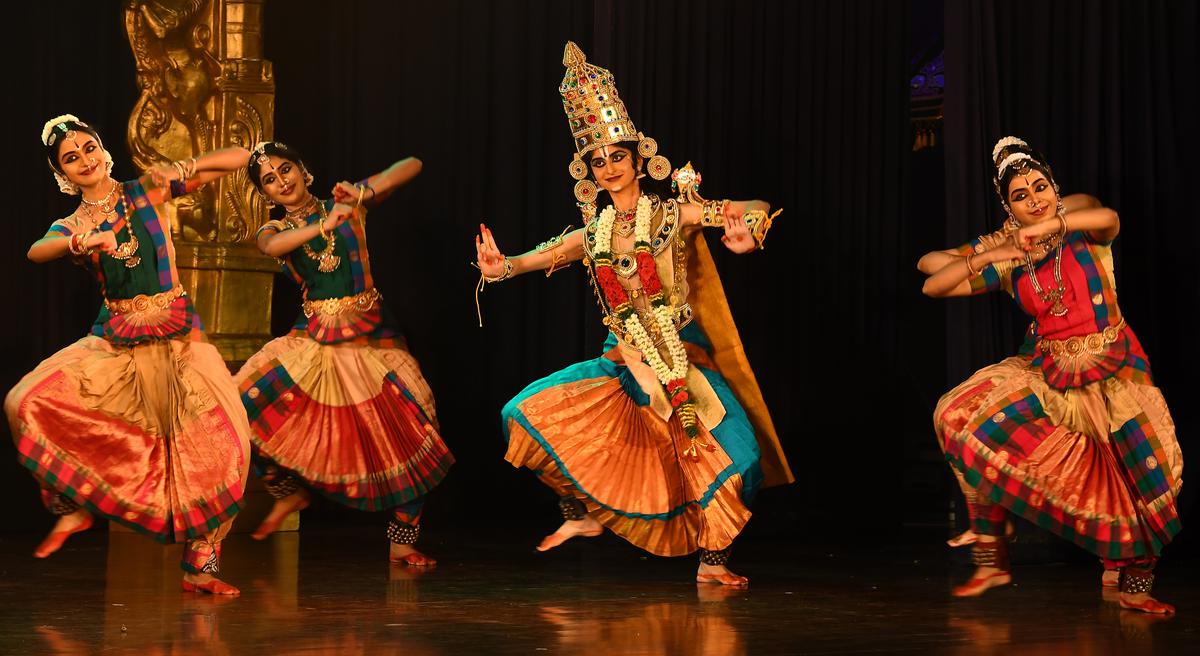
From Bharathanjali’s thematic dance production, ‘Praise of the Seven Hills’.
| Photo Credit: SRINIVASAN KV
Anitha emphasises precision in jathis, formations, movements, entries, and exits. Her style being unabashedly dramatic, the enthusiasm in the nritta segments can appear exaggerated. Was it the addition of the synthesiser, one was not sure. Lowering the volume in recording would help reduce the aggressive overtone.
Interesting sollus
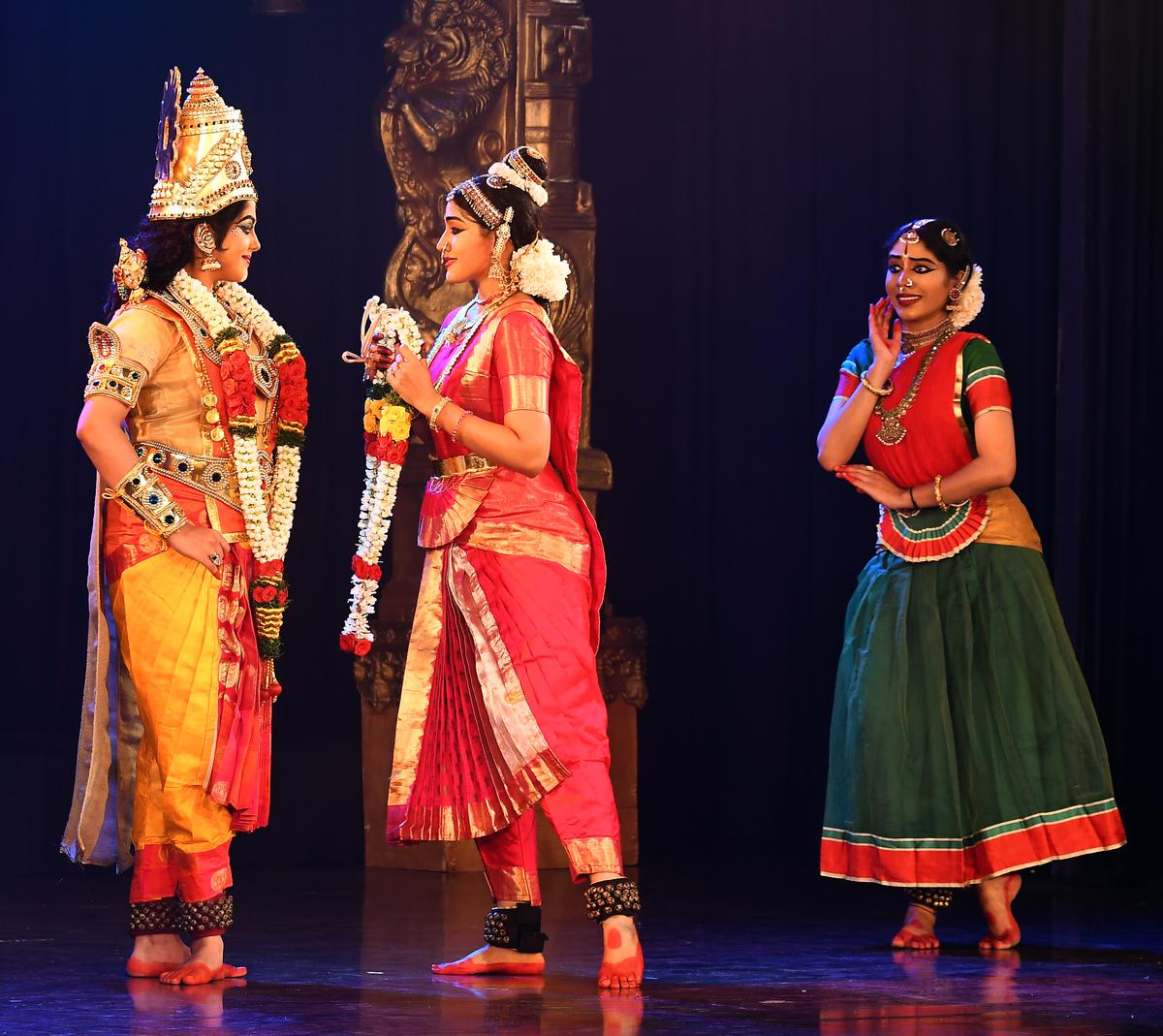
Students of Anitha Guha performing ‘Praise of the Seven Hills’, a dance drama based on the shlokas and songs written by Muralidhara Swamigal.
| Photo Credit: SRINIVASAN KV
The first was simply the best: ‘Srinivasa Karavalambam’ (Ragamalika, Mishra Chapu), a poetic shloka that described the beauty of Srinivasa in white and blue. The verses were interspersed with interesting sollus, performed by varying groups of dancers in different formations, as they wove in and out. The effect was electric, even ethereal. It is hard to understand the rigour that goes into attaining the split-second timing. From the beginning, when a group of young, bright dancers entered the stage, the atmosphere remained racy, and edgy.
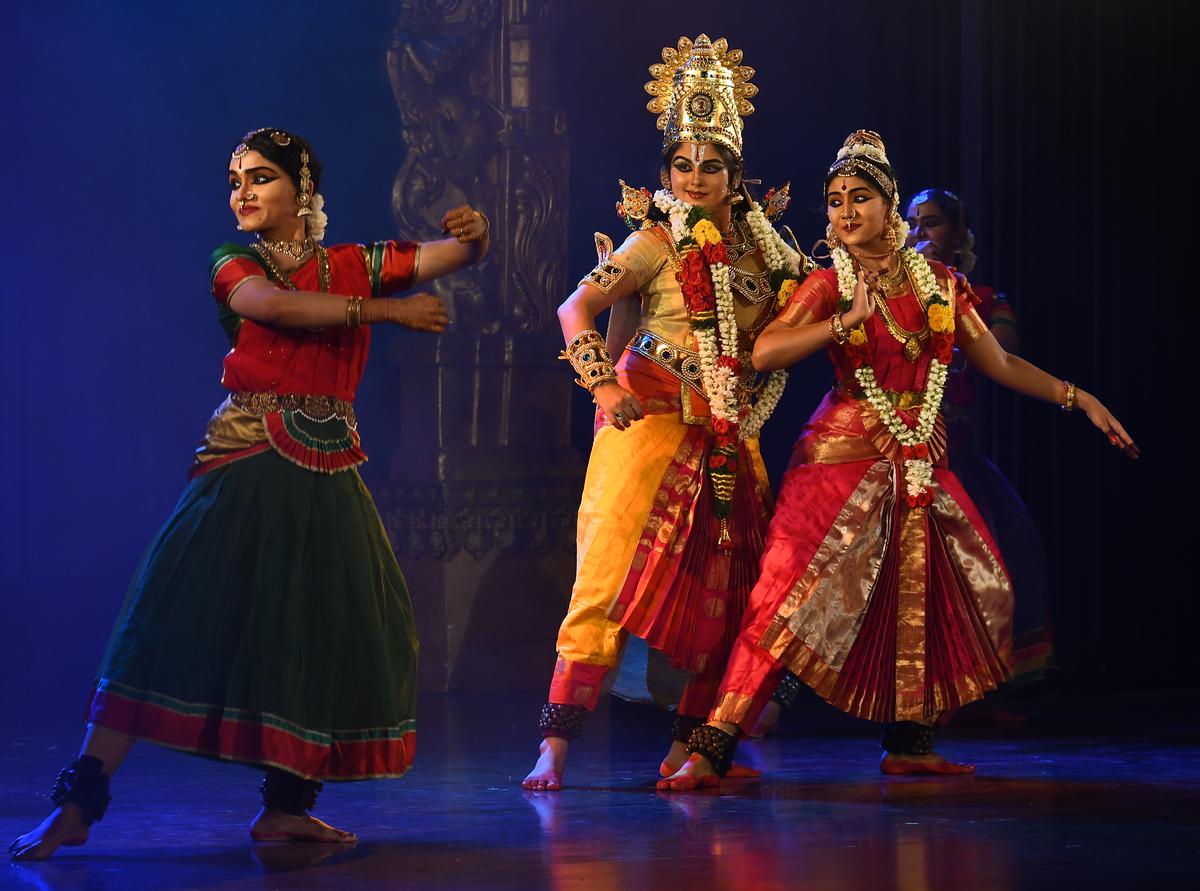
Bharathanjali’s ‘Praise of the Seven Hills’ a dance drama by Anitha Guha.
| Photo Credit: SRINIVASAN KV
The subsequent piece was also a combination of two separate happenings in the temple — god’s procession (Mallari) and the celebratory folk dance, both tuned interestingly in Gambhira Nattai (Adi). The Mallari presented in various nadais, alternating with the dances, was marked by perfect timing and synchronisation.
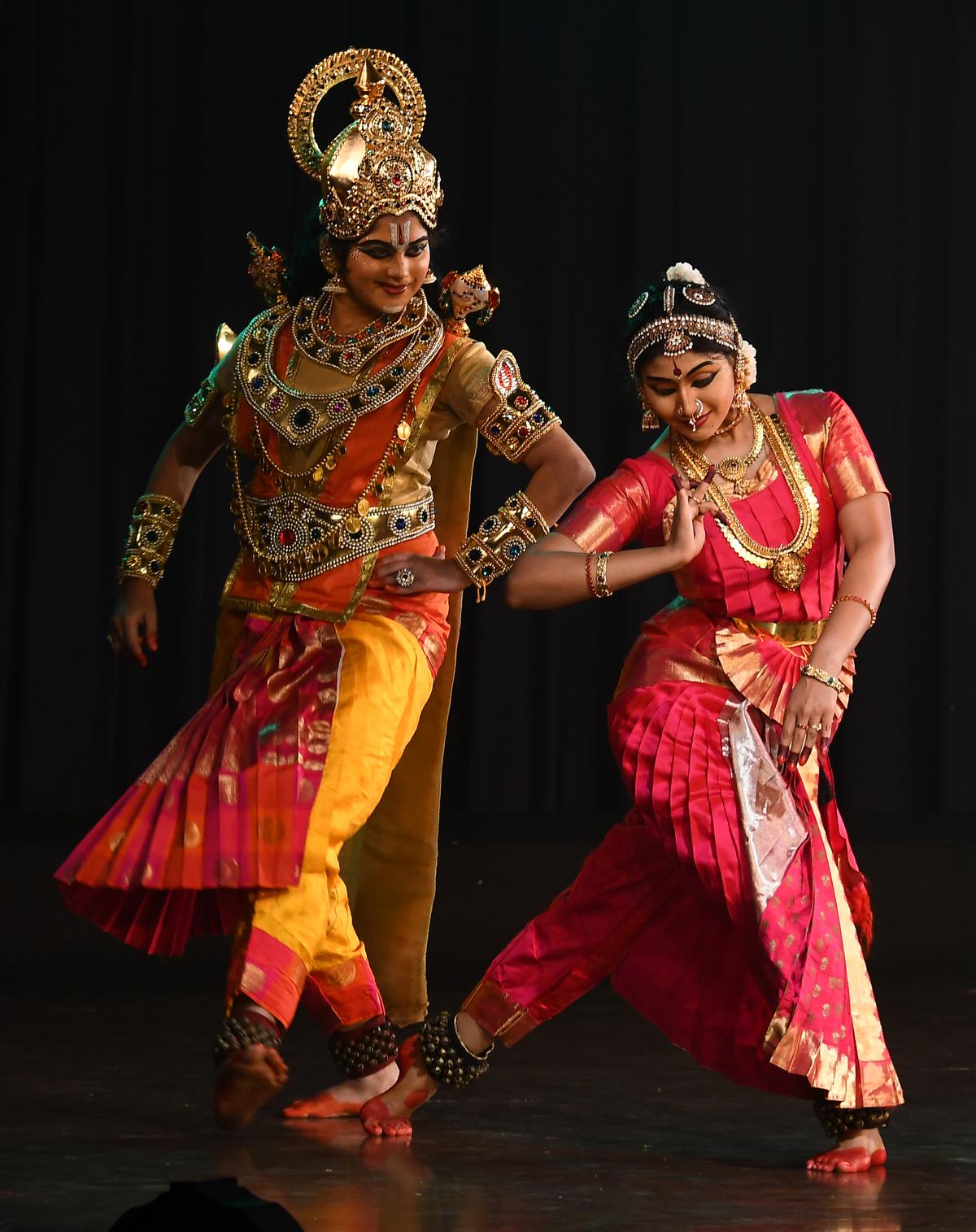
‘Praise of the Seven Hills’, a dance drama by the students of Anitha Guha.
| Photo Credit: SRINIVASAN KV
Anitha’s skills also extended to visualisation in ‘Oru nodi en thiruvadi’ (Lathangi, Khanda Chapu) that portrayed a poet (Sneha Vasan), who was dressed like Sri Muralidhara Swamigal, penning a composition about the Vamana and Narasimha avataras. There was an ekaharya abhinaya dancer-cum-narrator (Sandhya Shankar), who explained the lyrics, and there were the dancers, who enacted the avatara scenes. Anitha’s visual layering was clear and self-explanatory.
There was a sudden change of pace when a padam-like ‘Karanam arindhilene sakhiye’ describing Alamelumanga’s (Smrithi Viswanath) yearning to see her lord transitioned into the wedding ceremony in ‘Kannara kaanere’ (Anandabhairavi, Adi). Dramatically and unexpectedly drummers appeared on the scene towards the end of the song. Sakhis joined in, and the Kalyana Utsavam created a festive ambience. There were many components to juggle with, and this the choreographer did beautifully to sustain the momentum.
Without a narrative, the show held its own for one and a half hours. It ended with a picturesque delineation of Venkateshwara’s Brahmotsavam in Tirumala, when he is carried in a procession on a palanquin and vahanas in ‘Bavani varugindran’ (Ragamalika, Talamalika).
The Chennai-based reviewer specialises in classical dance.


